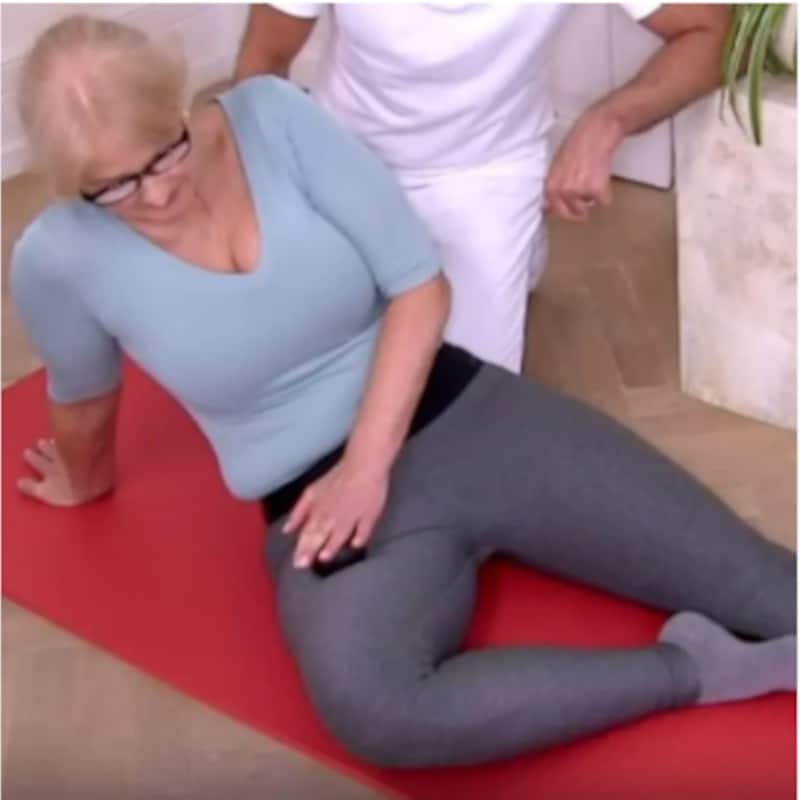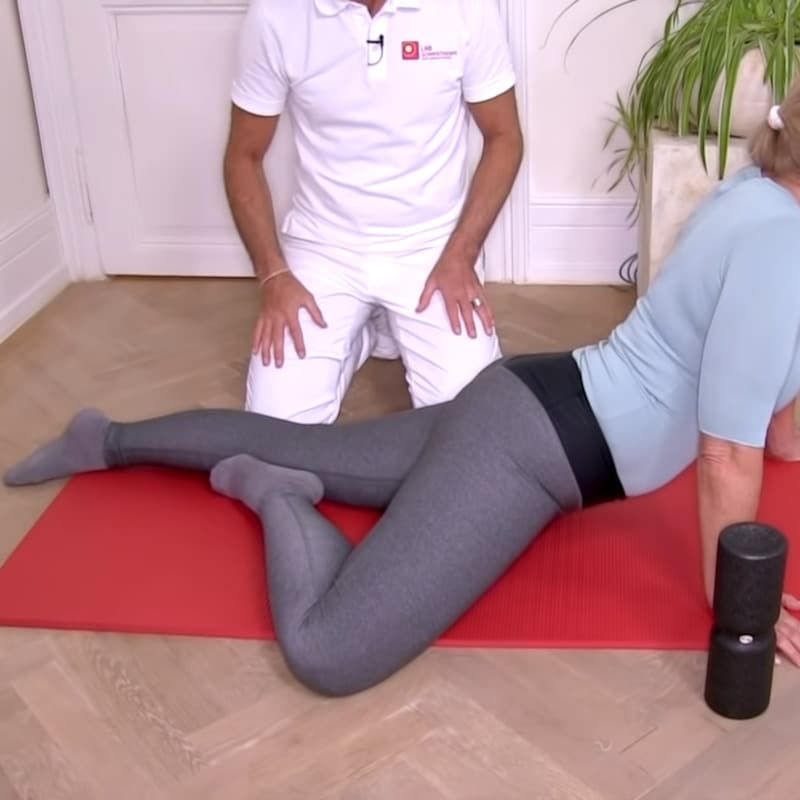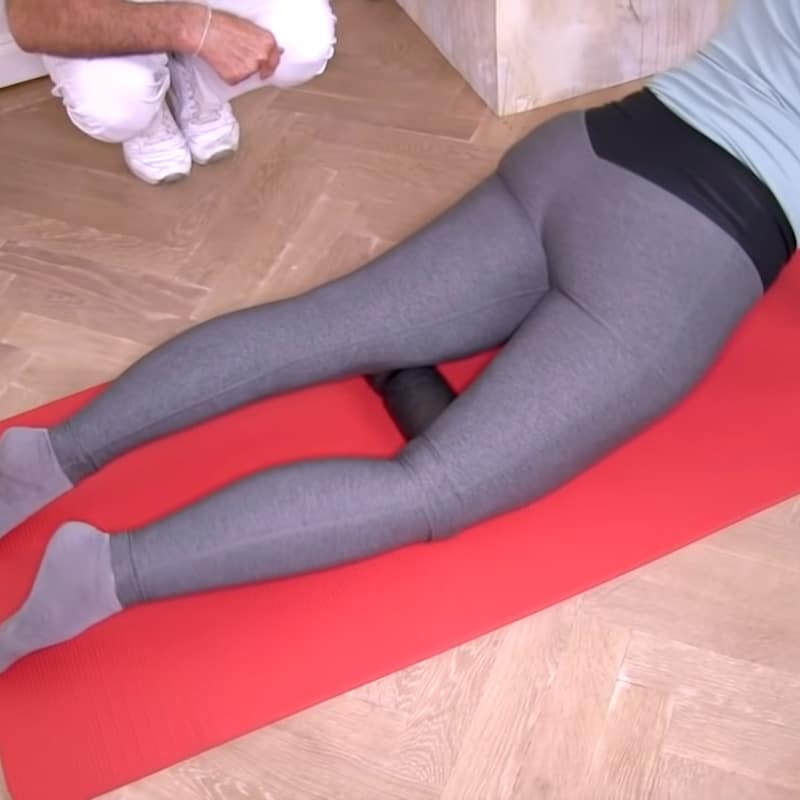Spondylolisthesis Exercises
Body Part:
Lower Back
Equipment:
Mini Massage Ball & Mini Foam Roller
Level:
Beginner
Body Part:
Lower Back
Equipment:
Mini Massage Ball & Mini Foam Roller
Level:
Beginner
Spondylolisthesis is a condition that causes back pain because of instability in the spine.
Our spine is made up of 33 vertebrae that are divided into 3 sections: the cervical spine (top 7 vertebrae), the thoracic spine (middle 12 vertebrae) and the lumbar spine (bottom 5). Spondylolisthesis occurs when a vertebra slides forward and moves onto the vertebra below it. The condition most commonly occurs in the lower back (lumbar spondylolisthesis) but may appear in other spine sections.
Our exercises for spondylolisthesis can help relieve lower back pain. The 3-step routine takes about 10 minutes, and all you need are our Mini Massage Ball and Midi Foam Roller. If you have a severe case of spondylolisthesis or are experiencing intense pain, please check with your doctor before doing our exercises. Jump to our routine or keep reading to learn more about spondylolisthesis.
There are several types of spondylolisthesis. They are:
Isthmic Spondylolisthesis
Isthmic spondylolisthesis is a condition that results from a fracture to the pars interarticularis, which are the bones that connect the upper and lower facet joints of the spine. Isthmic spondylolisthesis can be caused by activities that repeatedly stress the lumbar spine, such as diving, weightlifting, gymnastics and wrestling 1)
Degenerative Spondylolisthesis
Degenerative spondylolisthesis is the result of ageing. Between our vertebrae are intervertebral discs. These discs absorb the shock from movement and keep the spine flexible. As we get older, the intervertebral discs lose moisture and strength. Worn intervertebral discs can leave the spine prone to a vertebral slip (a vertebra slides onto the one below it.) Degenerative spondylolisthesis is more common in people who are 50+ years of age. You may be at risk of developing degenerative spondylolisthesis if your job requires driving, intense physical activity, or sitting for most of the day. 2)
Traumatic spondylolisthesis is a rare form of injury to the spine that causes a vertebra to slide forward. 3)
Pathological spondylolisthesis occurs when a vertebra slips because the bones have weakened from cancer, a tumour, or bone disease.
Congenital spondylolisthesis is a misalignment of the vertebrae, which is present at birth. People with congenital spondylolisthesis are at a greater risk of a vertebral slip.
Post-surgical spondylolisthesis is a slip that results from surgery on the spine.
Spondylolisthesis Symptoms
The most obvious symptom of spondylolisthesis is chronic pain across the lower back. Other symptoms are:
If you have a mild case of spondylolisthesis, you may have no symptoms at all.
Visit our online shop to get your Mini Massage Ball and Mini Foam Roller. While you’re there, take a look around. We’ve got lots of pain-relieving products and tools waiting to be added to your cart.
Take me to the shop.If you have a severe case of spondylolisthesis or are experiencing intense pain, please check with your doctor before trying our spondylolisthesis treatment. To maximize the benefits of our routine, exercise intensely and intelligently. Challenge yourself to massage and stretch at a high intensity that may produce an uncomfortable sensation. (This is a sign that the exercises are working.) However, do not massage or stretch to the point that your breaths become short and shallow or you find that you’re holding your breath or clenching your teeth.

For this exercise, you’ll need our Mini Massage Ball.



Include our spondylolisthesis exercises in your daily routine. Do them 6 days a week and leave 1 day for rest. You can adjust the frequency when your pain begins to go away.
While your spine is healing, take a break from any sports, exercise, or physical activity that could put your spine under stress.
Discover how to rejuvenate your back and hips with our Back Hero. All you have to do is choose the perfect Back Hero stack, lie down, and stretch.
Try Our Back Hero Stretch
Leg pain can impact the simplest to the most complex movements. This thorough relief routine covers your entire leg, from the tops of your toes to the tips of your hips.
Relieve Your Leg Pain
Our feet are a high-performing team. But with all the wear and tear, pain and inflammation are common. These stretches help keep your feet at the top of their game.
Get Rid of Foot Pain
Then we would be happy if you shared it with your friends: